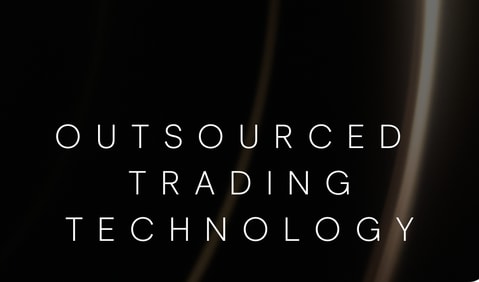Voice-based trading in financial markets – a relic of a former era, or an essential part of the equation?
Electronic trading continues to grow in dominance across financial markets, but given face-to-face dealing has now all but evaporated, why do we still see voice-based transactions taking place – and can they expect to have a future in a world that focuses so much on seeking out those fractional gains in efficiency? We spoke to Edmund Lim, an Institutional Sales manager at CMC Markets Connect in Singapore to understand more about how this space is evolving – and what might come next.
Q: Arguments that poor technology has been acting as a brake on the use of electronic trading are now redundant, given that global internet connectivity is so efficient. With that in mind, will we continue to see growth in this sphere?
A: There’s no debate that we’re now well beyond what could be considered a minimum viable product when it comes to electronic trading in today’s world, but as technologies develop further, we have the ability to realise yet more advances here. Perhaps the best place to look is at the younger, frontier markets. As they grow, they can see first-hand how wider adoption of electronic trading paves the way for access to deeper liquidity and tighter pricing, two factors that are recognised as being instrumental in any market’s development and growth. A shift to electronic based trading not only helps reduce risk by removing the potential for human error, but this also improves performance and drives down costs. By all accounts, these innovations have been taking place for the last 30 years or more, but with technology now baked into the heart of a financial market’s DNA, even in the situations where we do see voice-based trading occurring, it will inevitably be on the fringes, not in the mainstream.
Q: So a move from personalisation to automation must have an impact. How does that affect you as a business - and indeed the trader community in general?
A: Ultimately, electronic trading provides huge efficiencies of scale. Integrations can be aligned with a client’s business priorities and the overall readiness of the electronic system means that they can capitalise on far greater opportunities within the market. However, I think it’s important to stress at this point how CMC Markets Connect operates. We don’t just plug the client in and walk away, but instead provide high levels of support to our customers when they need it. This ensures that their systems are fully optimised to gain the benefit of CMC Markets’ technology, but there’s still a personal relationship sitting behind all of this. Greater efficiencies mean greater volumes and better price discovery. It’s all working towards advancing digitization, but real people are still involved. For example, at CMC Markets we employ an ever-growing number of quantitative analysts rather than dealers, with these statistical experts able to work with huge volumes of data to deliver pricing efficiencies both to ourselves and our clients.
Q: Are there now any real hurdles left when it comes to the adoption of electronic trading?
A: As I mentioned before, frontier markets continue to use voice-based trading as a first step, and that’s something that we tend to see carried across into the regional brokerage community. So at a general level, making access to these platforms more affordable is certainly helpful in facilitating this progress, but beyond that, there’s also a need for many market participants to change their approach from traditional workflows to new enhanced systems. And that’s something where again, CMC Markets Connect can provide real added value – we have invested over £100m in our own technology and have the first-hand experience to help our counterparties adapt to these new ways of working. Make no mistake, these are no small barriers to entry either, whether that’s because the counterparty’s existing infrastructure will require an upgrade or if there’s inertia to change internally. It’s not a simple plug and play solution, but experience has shown us that we do have the tools at our disposal to help.
Q: We have this transient space for voice-based trading, but what happens next? Where is the future?
A: There’s still an awful lot that we can do when it comes to using the cloud to extend the benefits of electronic trading. CMC Markets recently moved much of its infrastructure over to a third party cloud-based service to free up internal resources, and on an industry-wide basis we’d expect to see further innovations here, too. There’s also demand for more remote functionality, so ensuring that systems – even at the institutional level – can be accessed on hand-held devices. And again this is something that is very much in the lexicon offered by CMC Markets Connect. Ultimately however there will always be a space for voice or floor-based trading systems. Whether that’s as a new market finds its feet; when you’re looking to support an institutional partner with the needs they face from their downstream clients; or even just in abnormal market conditions when perhaps flow needs to be sculpted accordingly or liquidity becomes so strained that it’s the buy-side who find themselves in the driving seat, a one size fits all solution for this industry will rarely bring out the best in people. Despite the ambitions of big tech, it’ll be a long time until voice is redundant!



